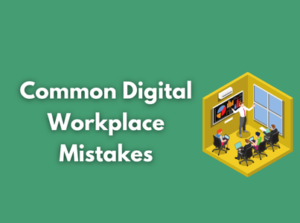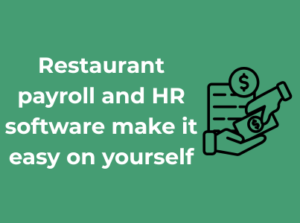Let’s talk about Single Touch Payroll (STP), the buzzword that might seem complex but is actually pretty straightforward. If you’re an employer in Australia, STP is something you want to have on your radar. But don’t worry — it’s not as scary as it sounds! In fact, STP can help streamline your payroll process in ways you might not expect. So, grab a coffee, and let’s break this down.
At its core, STP is an Australian Government initiative aimed at simplifying the way employers report on payroll information like salaries, wages, PAYG (Pay As You Go) withholding, and superannuation. Instead of submitting this data once a year via an annual payment summary, STP lets you report payroll information with every pay cycle.
The idea is to move towards real-time payroll reporting, which benefits both employers and employees. How? By saving time, reducing errors, and ensuring everyone’s tax obligations and super contributions are handled promptly. No more scrambling at the end of the financial year — doesn’t that sound refreshing?
Why Does It Matter?
Now you’re probably wondering, “Why should I care about STP?” Great question. STP isn’t just another government requirement — it’s a solution designed to help businesses run more efficiently while promoting fairness and transparency in the workplace.
- Simplified Reporting: STP integrates seamlessly with your payroll software, so you’re essentially automating the reporting process. Say goodbye to paperwork and heaps of forms!
- Compliance on Autopilot: Reporting through STP ensures you’re meeting your obligations to the Australian Taxation Office (ATO) without breaking a sweat.
- Employee Visibility: Employees gain more clarity about their earnings and super contributions in real time via their MyGov account. It’s a win-win for workplace transparency.

The Bigger Picture
On a broader scale, STP is about modernising payroll systems all across Australia. The ATO benefits from having up-to-date, accurate data, which helps prevent underpayment of superannuation and ensures fair contributions across the board. For employers, it’s about getting your payroll setup aligned with contemporary technology — this isn’t just helpful, it’s becoming the norm.
Not really! The beauty of STP lies in its integration with payroll software. The key is choosing a software provider that offers STP compliance. Most modern payroll systems come with STP already built-in. If you’re unsure, a quick chat with your software provider or accountant will point you in the right direction.
Who Needs to Comply with STP and When
If you’re an employer in Australia, you’ve likely heard of Single Touch Payroll (STP). But knowing exactly who needs to comply and when can sometimes feel a little confusing. Don’t worry—we’re about to break it down in plain English. Let’s make this simple and stress-free for you!
Who Needs to Comply with STP?
First things first: if you’re an employer with staff on your payroll, chances are you need to comply with STP. This includes businesses of all sizes, from small family-run operations to large corporations. Here’s a quick breakdown:
- Sole traders hiring staff: If you’re a sole trader running a business and paying employees, you must comply with STP regulations.
- Small businesses with 1–19 employees: STP became mandatory for small businesses from 1 July 2019, so you should already be up and running!
- Medium to large businesses with 20+ employees: These businesses have been required to report through STP since 1 July 2018.
- Employers paying closely held payees: From 1 July 2021, closely held payees (like family members of the business owner) also need to be reported via STP.
And yes, even if you’re paying wages to casuals or contractors, their payments might still come under STP reporting rules. It’s always worth clarifying with a professional accountant or bookkeeper to know your responsibilities.
When Do You Need to Start Reporting?
Good question! Your reporting start date depends on the size and nature of your business:
- If you’re a small or medium-sized business (up to 19 employees): The mandatory start date was 1 July 2019. If you’re not yet compliant, it’s critical to act now to avoid penalties.
- For large employers (20+ employees): STP has been a requirement since 1 July 2018, so you should already be onboard. No grey areas here!
- New businesses: If you started your business after these dates, you’ll need to comply as soon as you begin paying staff. No grace period here—it’s a “start from day one” situation.
- Seasonal or intermittent employers: If you don’t pay employees regularly (maybe only for peak seasonal periods), you must report via STP whenever you process payments.
What Happens If You Don’t Comply?
Non-compliance can be a real headache—and costly. Failing to meet your STP obligations could result in missed deadlines, reporting penalties, and even disruption to your employees’ super contributions and income tax records. That’s not a good look for any business!
Fortunately, the Australian Taxation Office (ATO) is focused on helping businesses get things right rather than punishing mistakes. If you’re struggling to meet your reporting obligations, don’t stay silent—reach out to the ATO to seek leniency or assistance.
How STP Simplifies Employer Obligations
Handling payroll can feel like juggling flaming torches for employers. Between meeting deadlines, reporting to the Australian Taxation Office (ATO), and ensuring your employees are paid accurately, it’s a lot to stay on top of. That’s where Single Touch Payroll (STP) steps in like a superhero to simplify the process and lift a burden off your shoulders.
Why Employers Love the Simplicity of STP
STP streamlines your payroll reporting obligations by integrating them into your regular payroll process. This means that every time you process payroll, important details like salaries, wages, tax withheld, and super contributions are reported directly to the ATO. Gone are the days of submitting multiple reports and filling out extra forms at the end of the financial year.
Think of it as a set-it-and-forget-it system where a little setup upfront saves you time, stress, and headaches down the road. Employers, especially busy small-business owners, can focus more on growing their businesses instead of wrestling with complex reporting rules.
Key Ways STP Works to Your Advantage
Let’s break this down into actionable benefits for you:
- Real-time reporting: With STP, there’s no need to wait until the end of the financial year to report your payroll data. Instead, everything happens in real-time with each pay cycle. Immediate submission means fewer surprises and greater accuracy.
- No more group certificates: Remember the old days of issuing Payment Summaries or Group Certificates? Those are largely a thing of the past. The ATO now has direct access to your employees’ pay information via STP, reducing your workload at tax time.
- Superannuation compliance: By reporting super contributions each time employees are paid, STP provides greater transparency and ensures you’re keeping up with your legal obligations. No more unintentional delays or oversights.
- Simpler reporting for EOFY: At the end of the financial year, you can breathe easier knowing most of your reporting has already been taken care of through STP. It’s one less box to tick off your to-do list!
- Improved accuracy: Since data is reported directly, it minimizes errors and duplication, helping you avoid discrepancies or auditing issues later on.
STP Simplifies Payroll for Businesses of All Sizes
Small businesses often have limited time and resources to dedicate to payroll administration, which is why STP is such a game-changer. Mid-sized businesses, on the other hand, benefit from having a scalable, automated solution that aligns their payroll processes with compliance requirements.
If you’re already using STP, great! You’re ahead of the game. If you haven’t started yet, don’t worry—it’s never too late to get on board. A little upfront effort sets you up for long-term ease, so it’s worth making the leap.
Common Mistakes Employers Make with STP Reporting
Single Touch Payroll (STP) reporting has been a game-changer for employers in managing payroll obligations. However, as transformative as it is, STP isn’t without its challenges. For many employers, especially if they’re new to the system, it’s easy to fall into common traps that result in errors and unnecessary stress. Let’s dive into these mistakes and, most importantly, how to avoid them!
1. Missing Deadlines
One of the most frequent pitfalls is failing to submit STP reports on time. Remember, reports must be sent on or before pay day. Missing this deadline, even unintentionally, can lead to penalties from the ATO (Australian Taxation Office). Setting up reminders or leveraging your payroll software’s automated features can help ensure you’re always on time.
2. Incorrect Employee Information
Inaccurate employee data is another common issue in STP reporting. Simple errors — such as misspelled names, wrong tax file numbers (TFNs), or outdated superannuation details — can cause reporting headaches. Always double-check that your employees’ personal and financial information is current and accurate. Encouraging employees to review their details regularly can be a big help too!
3. Not Keeping Software Updated
STP-compliant software is a vital part of smooth reporting, but using outdated software can cause errors or fail to meet updated regulations. Many providers frequently release updates to align with the latest compliance requirements. Make sure auto-updates are enabled, or set a reminder to check for updates regularly.
4. Poor Record-Keeping Practices
STP reporting integrates seamlessly with your payroll software, but that doesn’t mean you can completely ignore record-keeping responsibilities. Retaining accurate records of wages, superannuation, and tax details is still crucial. Employers often make the mistake of relying solely on technology without backing it up with proper documentation. Think of it as having a safety net!
5. Treating Closures and Final Events Incorrectly
If you’re closing your business or finalizing an employee’s pay at the end of the financial year, you need to lodge the correct “Final Indicator” in your report. It’s a step that’s often overlooked, which can cause confusion for both employers and the tax office. When in doubt, refer to your STP software’s guidance or consult with your accountant.
6. Forgetting to Reconcile
STP automatically passes payroll data to the ATO, but that doesn’t eliminate the need to regularly reconcile your payroll. Discrepancies in pay data could lead to compliance issues when tax time comes. By reconciling every pay cycle, you can catch and address errors early before they snowball into bigger problems.
Choosing the Right Software to Handle STP
Single Touch Payroll (STP) has become a core part of how businesses in many regions report payroll information to the tax office. While STP simplifies and streamlines compliance, choosing the right software to handle STP can feel just as important as understanding the system itself. Don’t worry — we’ve got you covered with everything you need to know to make the best choice confidently.
Why Picking the Right STP Software Matters
Imagine using clunky tools that complicate payroll rather than simplify it! The right STP software not only ensures compliance but also saves you time, reduces errors, and makes life easier for you and your team. A seamless payroll process means focusing more on growing your business instead of getting stuck in administrative details.
What to Look for in STP Software
Before jumping on the first payroll software you come across, take a deep breath and consider the following key features:
- Compliance: The software should be ATO-approved (or authorized by your local tax office) to meet all legal regulations for STP reporting.
- User-friendly interface: Nobody wants to spend days learning complicated software. Look for a platform that’s intuitive and easy to navigate, even for non-tech-savvy folks.
- Automation: The more the system automates, the better! Automated payments, tax calculations, and real-time reporting can save hours of manual effort.
- Integration: Does the software play nicely with your existing systems, like accounting platforms (think Xero, QuickBooks, or MYOB)? Integration is a huge time-saver.
- Scalability: If your business grows, can the software handle more employees and evolving payroll complexities?
- Customer support: Even the best tools can hit roadblocks. Reliable customer support ensures you won’t be stuck if something goes wrong.
The Different Types of STP Solutions
One size does not fit all when it comes to STP software. Here are the main categories to explore:
- Standalone STP Solutions: These are dedicated programs specifically for STP reporting. They’re useful for smaller businesses needing a straightforward tool.
- All-in-One Payroll Systems: These combine payroll management with STP reporting. Perfect for employers who want extra features like leave tracking and employee portals.
- Accounting Software with STP Integration: Some accounting solutions have built-in STP capabilities. If you’re already using one for bookkeeping, upgrading to an STP-compliant version may streamline your processes.
Tips for Implementation
Once you’ve chosen your software, making the leap to full implementation might feel like a big hurdle. Here’s a few recommendations to help the transition:
- Test out free trials: Many STP providers allow you to try the software before committing. Use this time to see how well the tool fits your needs.
- Train your team: Familiarize your staff — or yourself — with basic functions and reporting processes to avoid future hiccups.
- Stay updated: As payroll laws and regulations change, make sure your software is keeping up. Most good tools roll out updates automatically, but it’s worth double-checking.
How to Fix STP Errors Without Stress
So, you’ve made a mistake in your Single Touch Payroll (STP) reporting? Don’t stress! No one’s perfect, and errors happen even to the best of us. The great news is that fixing STP mistakes isn’t as daunting as it might seem. Let’s walk through the process step-by-step and lay out tips to keep this task hassle-free.
1. Identify The Error
The first and most crucial step is figuring out exactly what went wrong. Did you input the wrong employee details? Enter an incorrect payment figure? Overlook someone entirely? Identifying the issue is key to rectifying it quickly. If you’re unsure, start by reviewing the records you’ve submitted through your STP-enabled software and compare them with your payroll system and employee records.
2. Understand What the ATO Expects
The Australian Tax Office (ATO)—your regulatory go-to for STP—is pretty understanding when it comes to human error. They don’t expect STP to always be 100% perfect, but they do require employers to amend incorrect submissions promptly. Waiting too long to correct errors could lead to penalties, so don’t delay!
3. Update Your STP Software
If you find an error, the easiest and quickest way to fix it is through your payroll or STP-enabled software. Most modern software programs allow you to make adjustments by sending an amendment report. Consult your software provider’s help guides or support team if you’re unsure how to proceed.
4. Steps to Fix Common Errors
- Incorrect Employee Information: Update the employee’s details within your payroll system (e.g., name, tax file number) and submit an amended STP report.
- Wrong Payment Figures: Adjust the payment totals in your payroll software and send a “corrected” payroll report via STP. Be sure to explain the discrepancy in your records.
- Missed Employees or Payments: Add the missing data to your software and lodge it as soon as you can.
Remember, fixing an error isn’t just about amending the figures for the ATO; it’s also about ensuring that your employees’ payments, tax, and superannuation contributions are accurate.
5. Communicate With Employees
If an STP mistake impacts your employees, such as an under-reported salary or incorrect super contribution, it’s important to let them know what went wrong and how you’re fixing it. Open communication builds trust and ensures they understand their records will be accurate moving forward.
6. Prevent Future Errors
While fixing mistakes is important, preventing them in the first place is even better. Here are a few simple tips to avoid repeating errors:
- Double-check your entries: Always confirm details before submitting reports. Cross-reference with your payroll records for accuracy.
- Use automation: Many payroll systems have built-in error checks. Lean on these features to catch mistakes early.
- Stay informed: Keep up with any changes in STP compliance regulations to avoid outdated practices.
Top STP Tips for Small and Medium-Sized Businesses
Small and medium-sized businesses (SMBs) often juggle many responsibilities, and keeping up with payroll compliance can feel overwhelming. But fear not—Single Touch Payroll (STP) doesn’t have to be daunting. In fact, with the right tips and tricks, STP can become just another routine part of your business operations. Let’s dive into some practical, game-changing tips specifically for SMBs!
1. Stay Organized from Day One
One of the easiest ways to tackle STP is by starting with a solid foundation. Whether you’re a new or established business, here’s what helps:
- Keep your employee details up to date. Confirm information such as names, Tax File Numbers (TFNs), and superannuation details.
- Track changes in your workforce. If someone joins or exits, update records promptly to avoid last-minute STP stress.
- Organize your payroll records consistently so they’re readily available for reporting.
Being proactive here saves you from the headaches of scrambling at the last minute—and trust us, it’s worth it!
2. Utilize the Benefits of Automation
Automation is a lifesaver, especially for SMBs with limited payroll staff (sometimes just *you*). Many software solutions tailored for STP help automate reporting, reconciliation, and compliance, so make full use of these tools. Key benefits include:
- Reducing manual errors—no more typos or data discrepancies!
- Saving time by auto-generating and submitting STP reports.
- Setting reminders for due dates, keeping you consistently compliant.
If you’re already using payroll software, double-check that it’s STP-enabled and compliant. If not, it might be time for an upgrade.
3. Understand Reporting Deadlines
When it comes to STP, timing is everything. As a small or medium business, you’ll want to familiarize yourself with your specific reporting obligations:
- For most businesses: Payroll information must be reported on or before each payday.
- Micro-businesses: You might have quarterly reporting options, depending on eligibility. Check with the Australian Taxation Office (ATO) for the latest updates.
Rely on your payroll software’s scheduling features or set calendar alerts to stay on track. Consistently meeting these deadlines helps you avoid penalties and keeps your business in good standing.
4. Communicate with Your Staff
Transparency is key. Keeping your employees informed about any STP-related updates builds trust and ensures they’re on the same page. Share information like:
- When their tax and super details are being reported.
- Where to access their year-to-date tax information (e.g., via their myGov account).
This kind of open communication not only helps employees feel confident, but it also prevents confusion about end-of-year payment summaries.
5. Seek Professional Advice When in Doubt
If you find yourself stuck or unsure about STP, don’t hesitate to reach out for help. Trusted resources include:
- Your accountant or bookkeeper—they’re payroll pros and know what’s best for your business.
- The ATO’s support tools and guidance for small businesses.
- Industry forums or associations, where fellow SMBs share tips and experiences.
Remember, you don’t have to figure it all out alone. A little assistance goes a long way in ensuring you stay compliant while growing your business.






